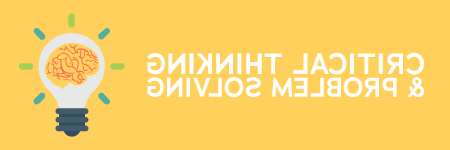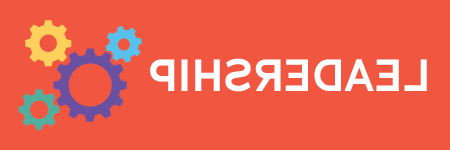大学竞争力
The 大学竞争力 are a framework for students to tell their story and serve as leaders in our shared future. They were created to address the growing disconnect between the skills employers and society seek in college graduates and the 能力 of students to demonstrate proficiency in those skills. Rochester students develop these competencies 通过ir coursework and co-curricular experiences.
适应性和弹性

The 能力 to demonstrate flexibility and readily adjust in response to change and innovation builds perseverance, which allows re-framing of problems and navigating community resources to overcome challenges. 通过这个过程, 学生识别方法, alternate paths or new opportunities to achieve desired results.
能力发展机会的例子:
- A first-generation college student navigates their first year as an undergrad, 寻求他们的支持 大学的导师 and 一年级的.
- A student facing difficulty in MATH 141 takes advantage of tutoring services available 通过 学习中心.
- The 国际事务办公室 provides academic resources helping international students adapt to the cultural practices of the American Classroom.
主要态度和行为:
- 表现出成长的心态
- 拥抱并适应变化
- 敢于冒险,在失败中坚持
- 寻找资源
职业设计与管理

识别和理解兴趣的能力, skills, 的优势, 知识, 和经历来讲述一个人的故事. 通过持续的批判性反思, 学生探索职业选择, 建立能力之间的联系, 并寻求发展机会. Students are able to self-advocate and design opportunities while being cognizant of environmental and cultural contexts.
能力发展机会的例子:
- 在宣布他们的专业之前,学生访问 格温米. 格林中心 寻求职业建议和简历方面的帮助.
- A student interested in graduate education participates in one of the 卡恩斯中心的暑期网赌论坛有哪些项目 去一睹网赌论坛有哪些生生活的风采.
主要态度和行为:
- 了解自我和潜能
- 构建能力
- 打造个人品牌
- 建立网络
批判性思维和问题解决能力

一个迭代, dynamic process through which students formulate questions, 定义问题, become aware of biases and assumptions of self and others, 对多个参数求值, 矛盾的来源, 并综合相关信息. 通过这个过程 students can positively impact decision making to address needs in a real-world context.
能力发展机会的例子:
- 一个有创业精神的学生与 iZone 咨询就一个项目进行咨询
- A student interested in strengthening the ties between the 网赌论坛有哪些 and City of Rochester receive a grant 通过 社区参与挑战,与 社区参与中心 解决一个持续的挑战
主要态度和行为:
- Selects and uses information to investigate a point of view or conclusion
- Understands context and assumptions when presenting a position
- Understands global systems, conclusions, and related outcomes
- Uses methodic approach to problem solving (defines problems; identifies strategies; proposes, 评估, and implements solutions; 评估 outcomes)
跨文化和全球流畅性

通过技能的发展, 知识, 和理解, 学生表现出文化谦逊, and both value and respect diverse and intersectional experiences, 包括文化差异, race, gender, 社会经济地位, 能力, 宗教, national origin and other markers of the human experience. Becoming aware of implicit bias and privilege develops the capacity to engage and communicate within different cultural contexts.
能力发展机会的例子:
- 一名学生参观 伯格特文化中心 for resources talking about race and bystander intervention
- A student wanting to learn more about interfaith engagement participates in a program hosted by the 宗教间教堂
- A student who never left the United States works with the 海外教育中心 在世界的一个新地方学习
主要态度和行为:
- 展示全球和文化的自我意识
- Demonstrates 知识 of cultural worldview frameworks
- Interprets intercultural experiences with empathy, curiosity, and openness
- Takes personal and social responsibility in addressing challenges
领导

Through formal and informal positions, everyone can be a leader. Students leverage the 的优势 of community to reach common goals and use interpersonal skills for coaching and development. 通过一个学习和应用技能的过程, students can accomplish measurable and meaningful change.
能力发展机会的例子:
- 一名学生组织官员在 大奖章的程序 参加与小组领导能力有关的讲习班
- 一年级学生参加 新领袖班(CASC 350) to develop their own leadership style while exploring their college transition
- A student affiliated with the Office of Minority Student Affairs (OMSA) joins the 新兴领袖计划 成为一个更有自知之明的领导者
主要态度和行为:
- 了解领导能力
- 表现出有效的领导能力
- 管理团队冲突
- 创造并影响积极的社会变革
口头及书面沟通

Communication grounds our interactions and connects us with others. 写作, 阅读, 说话, 倾听可以帮助我们理解知识, ideas, and value of others so that we can discover and articulate new perspectives. Effective communication leads students to discover, develop, test, and share our ideas.
能力发展机会的例子:
- 一个学生加入了 写作小组 通过 写作,口语和辩论课程 和一群同龄人一起完成写作目标
- 一个害怕公开演讲的学生用一种 说话的 to provide feedback on the speech she is delivering to run for her sorority’s executive board
主要态度和行为:
- Communicates with clear organization, language, and delivery
- Uses supporting material to convey a compelling central message
- Considers audience, purpose, and circumstances in communication
- 显示对语法和机制的控制
团队合作

Mutually beneficial relationships complement individual work and are required for robust learning. By connecting with others, students test ideas, challenge assumptions, and navigate conflicts. Working together, students solve problems and drive innovation for the betterment of communities.
能力发展机会的例子:
- 一个学生加入了 兄弟会或姐妹会, club or 大学运动代表队 运动,或 大学生组织 成为一个成熟团队的一员
- A student who performed well in chemistry 131 their first year applies to be a 同行的领袖 to lead team study group sessions for students in that course
主要态度和行为:
- 参与团队会议
- 促进团队成员的贡献
- 在团队会议之外做出个人贡献
- 培养建设性的团队氛围
- 对冲突的反应
学生资源
教职员工资源
- 下载一个 可打印的PDF 大学能力的版本
- 安排与John DiSarro (联系方式如下) to discuss ways to highlight and assess student competency development in your office or department
包含关键绩效指标的评估准则
图形
遵循 工具包 遵守适当的图形标准:
For questions or more information, please contact John DiSarro at john.disarro@85500171.com.
